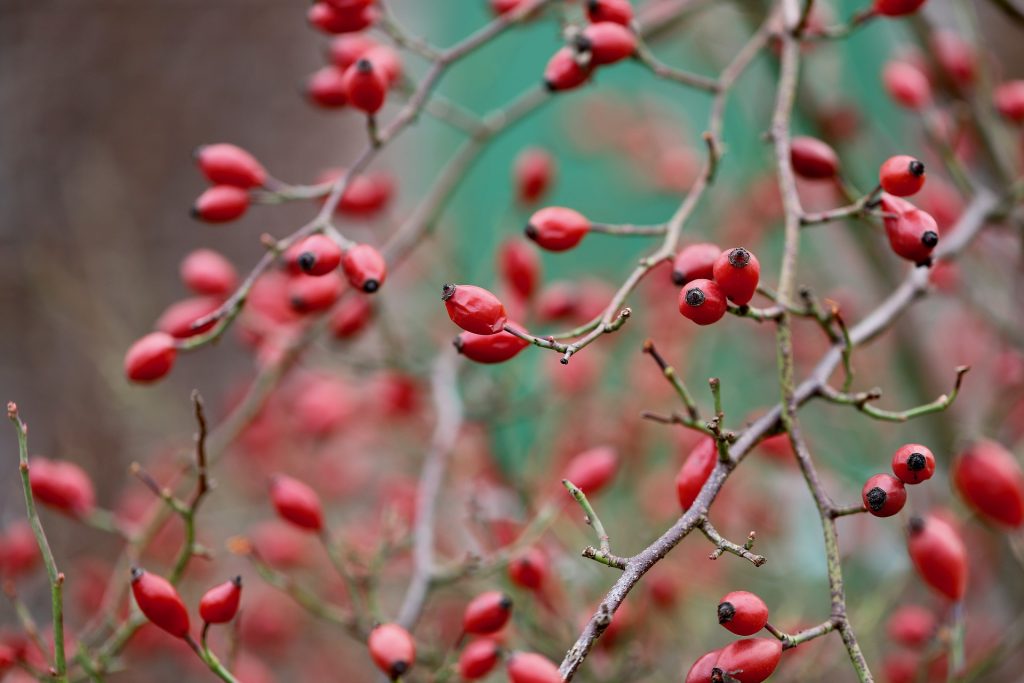
Introduction
Rosa canina, often known as the dog or wild rose, grows throughout Europe, North Africa, and Asia. It is a Rosaceae family member and a widely spread shrub species with several traditional medicinal and culinary applications. In this essay, we will explore the distribution and habitat of Rosa canina, it is chemical composition and nutritional value, and its medicinal properties and uses.
Distribution and Habitat
Rosa canina grows in many parts of Europe, North Africa, and Asia. It is a plant that can tolerate various environmental conditions, including drought, heat, and cold. It is commonly found in hedgerows, meadows, and scrubland and can be grown in gardens as an ornamental plant.
The dog rose is a deciduous shrub that grows up to 3 meters tall. It produces white or pink flowers in late spring or early summer, followed by small, red or orange fruits called hips. These hips are rich in vitamin C and are commonly used to make teas, jams, and syrups.
Chemical Composition and Nutritional Value
Rosa canina contains a variety of phytochemicals, including flavonoids, phenolic acids, carotenoids, and essential oils. These compounds have antioxidant, anti-inflammatory, and antimicrobial properties.
The hips of Rosa canina are particularly rich in vitamin C, containing up to 20 times more vitamin C than oranges. They are a great source of other vitamins, including vitamins A, E, and K. Additionally, the hips are rich in dietary fibre and essential minerals such as potassium, calcium, and magnesium.
Medicinal Properties and Uses
Rosa canina has a long history of use in traditional medicine for various conditions, including respiratory infections, digestive disorders, and skin problems. Modern research has confirmed many of these traditional uses and has identified additional potential health benefits of the plant.
The high vitamin C content of Rosa canina hips makes them a valuable treatment for scurvy, a condition caused by vitamin C deficiency. In addition, the plant’s anti-inflammatory and antioxidant properties make it a potential treatment for various conditions, including arthritis, asthma, and cardiovascular disease.
Rosa canina’s antimicrobial properties make it a potential treatment for bacterial and viral infections. In addition, some studies have suggested that the plant may also have anti-cancer properties, although more research is needed to confirm these findings.
Conclusion
Rosa canina, or the dog rose, is a widely distributed shrub species with many traditional medicinal and culinary uses. In addition, the plant’s high vitamin C content and antioxidant, anti-inflammatory, and antimicrobial properties make it a valuable treatment for various conditions, including scurvy, arthritis, and respiratory infections. As research into the plant’s chemical composition and medicinal properties continues, we may discover even more uses for this fascinating plant.

